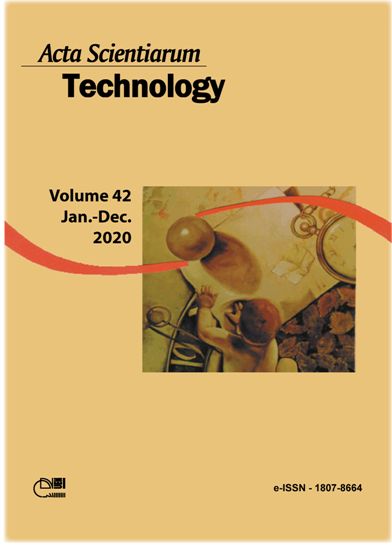Growth of Chlorella vulgaris using wastewater from Nile tilapia (Oreochromis niloticus) farming in a low-salinity biofloc system
DOI:
https://doi.org/10.4025/actascitechnol.v42i1.46232Palavras-chave:
aquaculture; bioremediation; microalgae; wastewater treatment.Resumo
The present study aimed to analyze the growth of Chlorella vulgaris in the effluent of a Biofloc Technology (BFT) system used in the Nile tilapia fingerlings farming. The conditions were cultivated by 10 days at 25 ± 2ºC, 90 μmol photons m−2 s−1 irradiance, under constant aeration (without addition of CO2), and with different BFT effluent proportions (0, 50, and 100%). After 24 hours of the inoculation that marked the beginning of the experiment, the development and multiplication of the cells were verified, demonstrating that the BFT effluent used in the Nile tilapia farming was favorable for the cultivation of the microalga Chlorella vulgaris. As expected, the Provasoli culture medium presented the best performance (1,520 ± 75 104 cells mL-1) in relation to the growth of the microalga. However, during the first four days of cultivation, C. vulgaris showed higher growth in treatments containing BFT effluent. C. vulgaris removed 93.6% of the nitrate contained in the BFT effluent. The results of the present study showed the potential use of C. vulgaris on Integrated Multi-Trophic Aquaculture with Nile tilapia fingerlings. In addition to removing nitrate and other nitrogen compounds, C. vulgaris biomass could be used to feed zooplankton or Nile tilapia larvae.
Downloads
Downloads
Publicado
Como Citar
Edição
Seção
Licença
DECLARAÇíO DE ORIGINALIDADE E DIREITOS AUTORAIS
Declaro que o presente artigo é original, não tendo sido submetido í publicação em qualquer outro periódico nacional ou internacional, quer seja em parte ou em sua totalidade.
Os direitos autorais pertencem exclusivamente aos autores. Os direitos de licenciamento utilizados pelo periódico é a licença Creative Commons Attribution 4.0 (CC BY 4.0): são permitidos o compartilhamento (cópia e distribuição do material em qualqer meio ou formato) e adaptação (remix, transformação e criação de material a partir do conteúdo assim licenciado para quaisquer fins, inclusive comerciais.
Recomenda-se a leitura desse link para maiores informações sobre o tema: fornecimento de créditos e referências de forma correta, entre outros detalhes cruciais para uso adequado do material licenciado.















